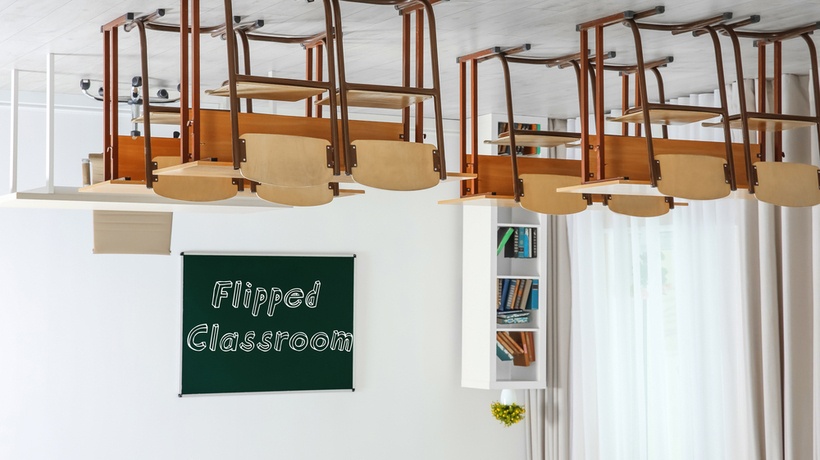Learn About The Flipped Classroom Model
Teachers are in a no less challenging position in regard to how to adapt to and adopt a new life. Online teaching with a flipped classroom model is the only solution to this challenge. The Industrial Revolution brought a significant shift in the education system, and we are now witnessing another major change during COVID-19.
I see the quality of learning increases with the proper implementation of the flipped classroom model. During my teacher training workshops, the participants were active and a higher number of students graduated the course with better marks.
The flipped classroom model is a simplified approach to teaching and learning. We call it a flipped classroom because the learning of the subject is done by students, while the live classroom deals with discussions and Q&A sessions. The students get a proactive role in learning while the teacher addresses critical topics and meaningful interactions with the students during the live class. There are 3 steps to this model:
- Individual study
- Interaction with teacher
- Application and review
1. Individual Study
This is a student activity designed to increase curiosity, generate interest, and provide basic knowledge of the subject. Recorded lessons along with PDFs and related reading assignments are given before the live class. It helps the student learn and come up with questions during the live class.
- Create projects and assignments that ensure the application.
Note for teacher: The teacher should ensure proper directions on how to use the material and provide links to the students and online learning assessments.
2. Interaction With Teacher
This can be synchronous and asynchronous. A synchronous interaction ensures discussion, student engagement, a focused Q&A session, and guidance for the future course of action. Asynchronous interactions through emails, WhatsApp, or using an LMS for communication, further consolidate the learning.
The live session is the energizer and plays the role of anchor to the course. Classroom activities that engage the student and create a sense of learning and competition will help. Tools like Kahoot Quiz, Google forms, etc., will create a competitive spirit and give feedback to the students learning as well.
3. Application And Review
Post the "interaction session," the students have time to implement the learning, expand their knowledge-base, collaborate with their peers for further learning and completion of assignments.
- Form online teams and encourage collaboration on projects.
Challenges And Benefits Of The Flipped Classroom
Common challenges:
- Lack of know-how of online learning for both teachers and students. Some teachers who are good at live classroom teaching might find it challenging to move online due to age-old habits and lack of online tools knowledge. Many teachers are discouraged when they see a long list of software that needs to be learned before they become an online teacher.
- Absence of high-quality and effective digital content. The teacher needs to develop technical skills in addition to the subject knowledge and pedagogy to create effective material. There are tools like Adobe captivate, MS Powerpoint, iSpring, etc., that can be used. The development will be time-consuming and it requires expertise.
- Teachers might end up with a lot of teaching hours and student support. Though students find email and WhatsApp interactions helpful, a teacher ends up spending many more hours than in the live classroom model.
- Slow learners will have a challenge in catching up with the class. Typically, this would be simple to handle in the live classroom, but online it makes it ambiguous as to why and where the real reason lies for slow learning.
- Students might not have access to technology. This poses a problem that is not academic; it could be financial or the students’ parents’ attitude toward technology.
Benefits:
- Review the video lectures more than once
- Proactive student attitude through self-learning
- Thinking outside the box
- Online collaboration with a peer will open new doors for students
- Students explore the length and breadth of the subject without the confines of a classroom in time and space
- The new generation of students finds the model suitable to match their skills and gadget know-how
